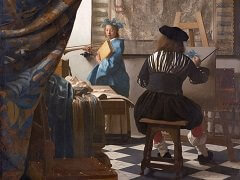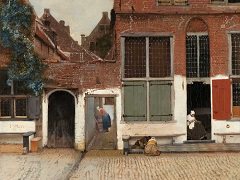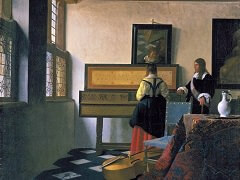View of Delft, 1660 by Johannes Vermeer
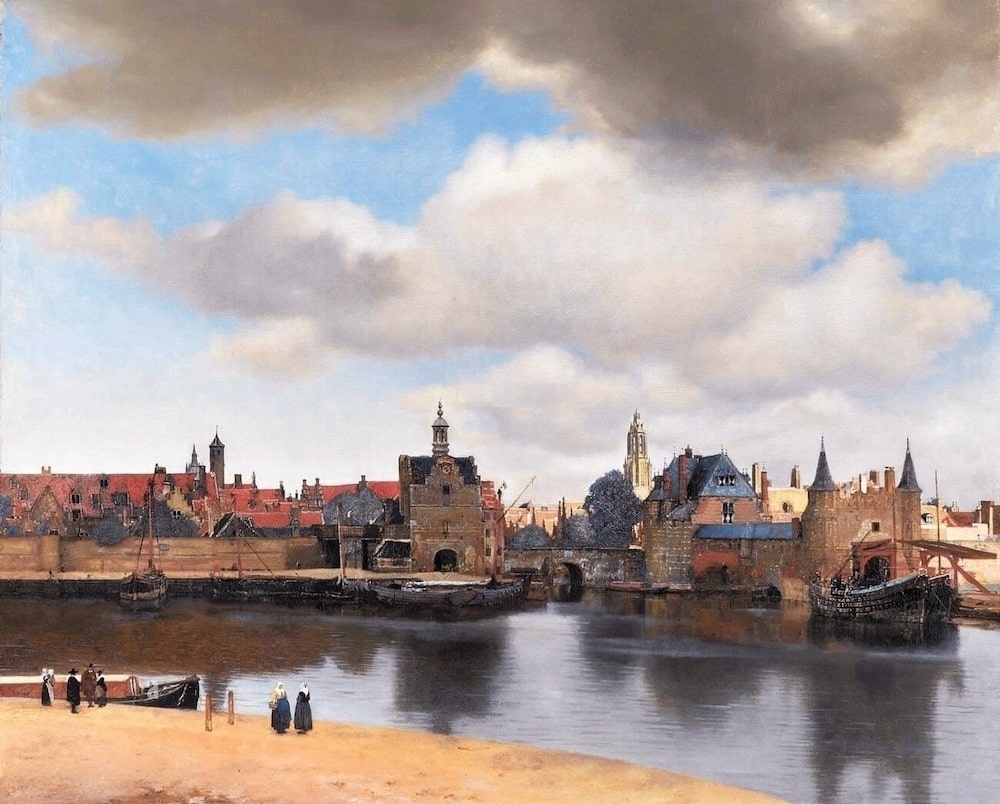
In View of Delft, Vermeer has depicted Delft from across its harbor, where transport boats would unload after navigating inland waterways from the ports of Rotterdam and Schiedam. Beyond the frieze of Delft's protective walls and massive gates, which Vermeer cast in shadow to suggest their age and venerability, the inner city glows in the warmth of bright sunshine. Rising above all is the tower of the Nieuwe Kerk, burial place of the Princes of Orange and the city's symbolic core.
The painting's stillness creates an aura of veneration for the city and its proud history. Although a few figures stand on the foreground shore, the harbor remains calm, with long shadows forming visual bridges to the city beyond.
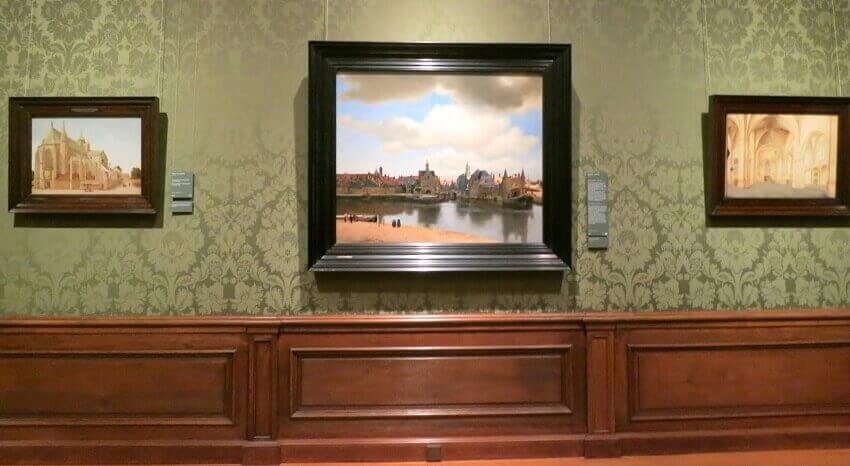
The painting's forcefulness stems in part from its large scale, which allows the viewer to enter into the space, but also from the tangible illusion of reality. Vermeer achieved this through his mastery of light and his ability to create textural effects. The buildings, for example, take on a physical presence because of Vermeer's suggestive manner of juxtaposing small dots of unmodulated colors with touches of the brush. He used a similar technique to suggest the reflection of water on the sides of the boats. These diffused highlights are comparable to those seen in a camera obscura, an indication that he may have conceived this painting with the aid of this optical device.


